Ghoz Khan – Bridge of Hope, Tajikistan Border
“Now I can’t say it’s good or bad. Tomorrow I will see” – Shah-e-Panj
Wakhan and Tajikistan are only separated by the Amu River. Tajikistan is visible everywhere from Wakhan Corridor. It looks like a wall of high mountains scattered by green valleys over there across the mighty river. Even the vehicles, camels, horses, and power lines of the country are visible from Afghanistan. But it’s as far as the sky, or at least, it’s double the distance to Kabul.
In this side of the river, life is desperate. Qala-e-Panjah, named after the fort in the village, is a tiny village marking the beginning of the Wakhan Valley. It’s 110 km away from Eshkashem, or 2 day trip by vehicle. Motorable road is existent, but the unpaved road scretched from Ishkashim to Sarhad-e-Boroghil through Qala-e-Panjah is a heritage of the 1960’s. The road often washed by floods from the river and streams making transportation only possible by sturdy Russian jeep, 4WDs, and tractors.
Schools are rare, hospital is not existent, electricity is only produced by private generators, and the nearest bazaar is in Ishkashim, that 2 day journey away. But the area has beautiful setting, and this can be the commodity to provide brighter future of the local community. The Norwegian Ministry of Foreign Affairs working together with the Aga Khan Foundation has started the construction of some guesthouses for tourists. But the fruits are not to be harvested yet. The area is a restricted area in a less visited country of Afghanistan. Hardly more than 10 tourists groups and less independent travelers in a year coming to explore the beautiful valleys and mountains, after struggling hard to pass the bureaucratic hopes to get the special permit from the border officers.
The people of Wakhan valley are Wakhi Tajiks who follow Ismaili sect of Islam. The women, compared to their Afghan sisters, are more visible in public in their colorful dress. Only when they go to bazaar in Ishkashim, they wear burqa, the full covering veil. According to Khan Jon, a muki (Ismaili imam) of Qala-e-Panjah, it’s because there are many Afghan Sunnis in Ishkashim, traders from everywhere in the country, coming to Ishkashim, and the Sunnis don’t like to see women’s faces. This what he called as ‘mota’aseb’, fundamentalist. But in Wakhan valley, the women are proud of the color of their scarves, shirts, skirts, trousers, shoes…, all in different colors and designs.
The Ismaili community of Qala-e-Panjah, as well as the whole Wakhan Corridor and Wakhan Valley, is led by a Shah (king) entitled Shah-e-Panjah. His real name is Said Ismail, 53 years old. The muki, Khan Jon, is his brother. His relatives are also respected men in the valley. The Shah possessed a house near the main road and now he is building a new one near the river. It’s his responsibility to accommodate and feed all of the coming travelers. One may query how the Shah managed to give food to all people coming to his house generously with piles of rice and slices of meats. The Shah with his enormous wealth doesn’t need to worry about that. I remember Islamic wisdom saying that the more you gave the more you would get.
I enjoyed the religious discussion with Shah and his relatives. His concept of the religion, based on the teaching of Ismailism, is a very open-minded, moderate, and modern interpretation of Islam. He disagreed that the clothes of women to be regulated in law, as religion is not on clothes but is in the heart. When I introduced the concept of reincarnation of Buddhism and Hinduism, he also showed his interests in learning, and he also translated the concept of karma in the frame of Islam to his followers. He really has the aura of a respected religious leader.
Gulam Sakhi, a high rank commander of border police in Wakhan area, is a Sunni Tajik whose duty mostly in Ismaili areas. He was rushing his way (together with me) from Eshkashem to Qala-e-Panjah by different methods of transports. The 110 km distance has to be covered by a whole day jeep journey to Khandud plus few hours on tractor to Qala-e-Panjah. The tractor is owned by the Pakistanis working for an NGO of development of the area. Sakhi, the high rank commander, hitch hiked the tractor for his journey. Joined his was Wali Muhammad, a high rank officer in Wakhan district government office in Khandod. The tractor with its gigantic wheels showed its power in crossing deep streams which flooded the main road.
Sakhi and Wali come to Qala-e-Panjah for a mission. This mission is hoped to bring change to the life in the valley. Tajikistan, the country at the other side of the river, agreed to open it’s gate to the Wakhan Valley of Afghanistan, and the opening date is today.
The night before, Sakhi and Wali met the Shah and other respected men of Qala-e-Panjah to discuss about the ceremony with the Tajikistan side. Transport is always a big problem here and I’m sure the Tajikistan officials would be surprised to death to know that high rank commanders and government officers of Afghanistan side had to hitch hike a tractor to meet them. The police station in Qala-e-Panjah had arranged a police car and another one to be arranged from Boroghil side. No journalists from Afghanistan, neither government representatives from Kabul, to witness the moment of this border opening from another unknown country in the land of middle of nowhere. This international ceremony has to be reduced to two village party. I had to hitch hike the tractor again to reach the border.
It was not clear about what would happen. The folk are talking about visiting the bazaar in Tajikistan side. The Tajikistan side promised to allow people from Afghanistan side to attend Bazaar e Mustarak to celebrate the moment. Sakhi also talked about smuggling me there by making a plot. I had to pretend to be a Hazara with a name Poyandah Eshkashem bin Rajab. I don’t think that Tajikistan is a happy country to smuggle into. The country is notorious of its KGB (Komite) and funny jails.
The border-in-question is located in Ghoz Khan, only a few kilometers away from Qala-e-Panjah but has to be reached after a long detour to cross the only bridge in Soust as Ghoz Khan is located at the other side of Wakhan River, exactly at the junction of Wakhan, Pamir, and Tajikistan. The bridge was not built by the Afghans, but by the invaders Russians for the transport of their troop from Tajikistan during the war. I started at 4 a.m. with the tractors. The VIP departed from Qala-e-Panjah at 6. I was dipped into the rivers along the journey and had to climb the rocks to avoid another streams. Life in Afghanistan is not easy.
Life in Ghoz Khan is very simple. There is an NGO doctor from the U.K. working in the area, but education is still a luxury. Ghorab Khan, 12 year old cowboy from Ghoz Khan has to upper area, 2 hours from his house for school. In this area, altitude plays more important role and direction is given in ‘upper’ or ‘lower’ only. He departs at 5 as the school starts at 8. “I study many things,” said him, “Dari, Pashto, Mathematics, science, geography, sport, and many others.” His class finishes at 12 and arrives at home at 2 or 3, and then he goes to the grassland to graze his father’s cattle: donkeys, cows, and sheep. His neighbor, Salamat, 8 years old, grazes the animals together with him until 5 o’clock, when they return back together to their homes from the watery grassland.
The VIP arrived first in the border. It’s a wooden bridge of 3 meter wide and less than 20 meter long across the Amu River to Tajikistan. It was built also not by Tajikistan themselves, but by their ex-colonizer, the Russians. In Afghanistan side nothing exists. In Tajikistan side of the bridge there is a welcoming banner with flag and coat-of-arms of the country, army guards, wire barriers, and an uncompleted construction. The Afghan soldiers, some came together with Sakhi, some others reached the border after a morning hike, was busy with their satellite telephones to contact their commander in Ishkashim. Afghan soldiers working in this lonely area don’t earn much. Qurban, 21 year old border soldier from Qala-e-Panjah earns only 3000 Af per month. The soldiers, as well as Sakhi, also are not sure about what would happen today, as nothing is seen on Tajikistan side.
Everybody in Wakhan is desperate that the bridge to be opened soon to connect the valley with Tajikistan. The Ismaili spiritual leader, the Hazrat Imam Aga Khan, had once visited the Wakhan Valley from the Tajikistan side. He came to the middle of the bridge and waved his hands to his followers in Afghan side. The Afghans only might see him from distance.
About 10 o’clock, two high ranked Tajikistan military officers come to the middle of the bridge, met by Sakhi and one another Afghan officers. The Tajikistanis are invited to come to the Afghan side to talk with the Shah and other respected men from Afghan Wakhan. A man expressed his happiness by opening of the border. “We don’t have anything here. Even we don’t have hospital,” said him hoping that Afghan villagers will get health service in Tajikistan, something that might be a little bit too difficult to realize, as one need to posses passport and visa to cross the bridge. Getting Tajik visa is only possible from Kabul, days of journey away. The 20 m long bridge at least equals to the double distance to Kabul.
Tajikistan doesn’t make any agreement about border pass system to allow people from the border to pass freely. In fact the country has fear about their Afghan border and put many spies and detectives from the KGB to control illegal border crossing. Illegal border crossing in the winter time from Afghan side is common when water of the Amu River is low and the river becomes crossable. Afghanistan is more relaxed about illegal crossing, as nobody wants to cross from Tajikistan to this poor neighbor.
“Tajikistan has law of dogs, qanon-e-sag!” said Wali, expressing his unhappiness about the regulation of border crossing of this neighboring country. The Tajik officials delivered invitation to 6 VIPs from Afghan side to attend the Bazaar Mustarak in the Tajik side. The bazaar will be held monthly, starting from August 1, 2006. People from Wakhan are allowed to join after some procedural border crossing, and the bazaar is just located next to the bridge. Nobody is allowed to go further beyond this point, unless he gets authorization from Dushanbe, the Tajik capital. This ‘law of dogs’ probably is a characteristic of more systematically organized law and regulation of a more stabile country.
When I asked the people about the impact of the new border, Wali and other Afghan government servants are optimistic. “We can get things from the bazaar,” said Wali. “Wand we can go to the hospital,” said the other. About passport and visas, the two officers were sure that it would not be necessary. “Just a protocol from valesvali (district office),” said Wali, “is needed.” The Shah was more realistic. “Any faeda (use) or not, I still don’t know. Now I can’t say it’s good or bad. Tomorrow I will see,” said him. Tomorrow everybody will have the chance to see Tajikistan, and hopes it is offering, himself.

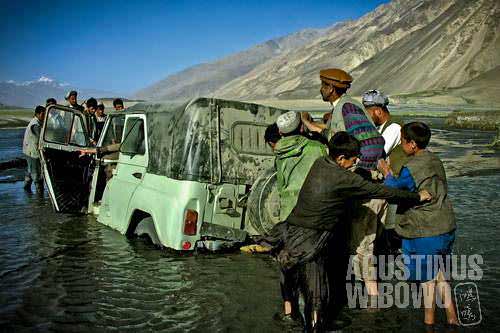


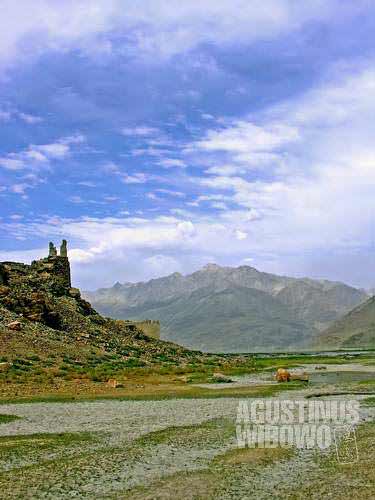

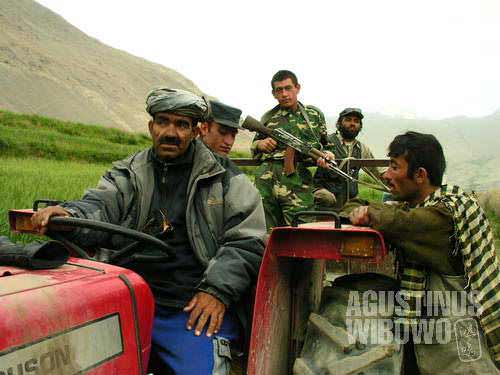
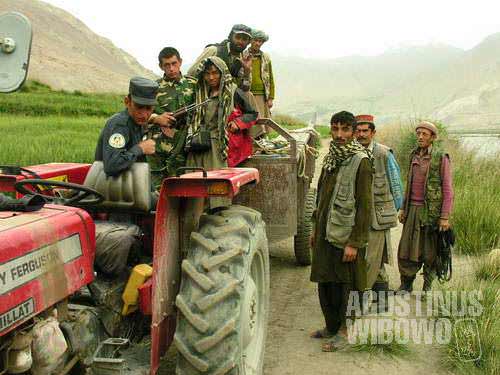
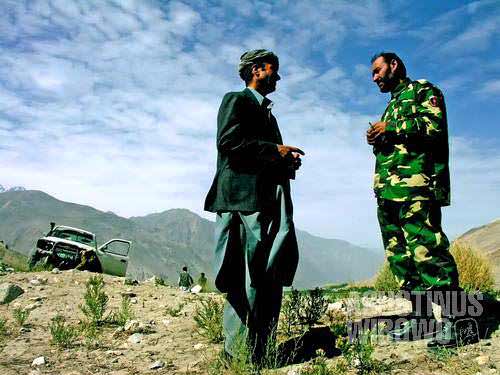

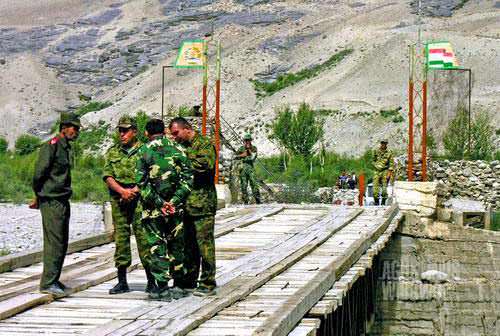





Leave a comment